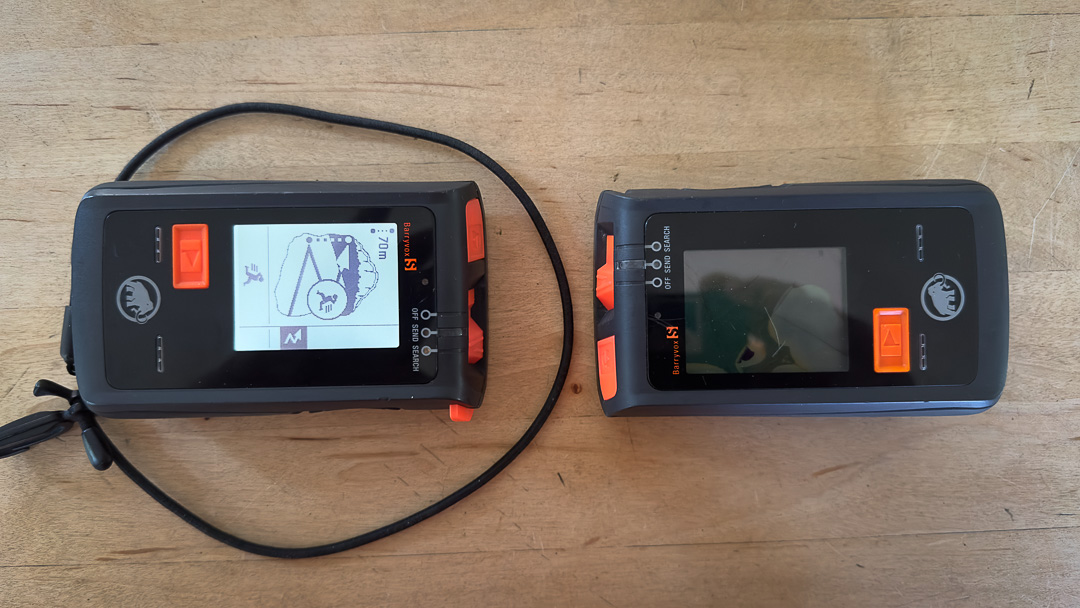In our attempt to be concise and straightforward, this post will focus on a single aspect of testing your avalanche transceiver: signal acquisition. Signal acquisition is a more technical way of describing the distance from which the searching transceiver first picks up a signal from the sending device. For example, using the Barryvox S, in a best-case scenario, the manufacturer claims a digital receiving range of 70m.
Here, I’m testing a few things when eyeing signal acquisition. I want a receiving range close to a best-case scenario. Further, I want consistent readings, so I’ll run the test a few times for validity.

The testing protocols were/are simple. I found a somewhat electromagnetically quiet space. I traveled to a local forest away from potential electromagnetic interference. No power lines were nearby. I left my phone in the car and was not wearing a watch or any other personal electronic devices. I used two Barryvox S transceivers. One has a cracked screen and is used as my test “send” transceiver during practice—the other Barryvox S is fully functional and is being tested for signal acquisition.






Leave a Reply
You must be logged in to post a comment.